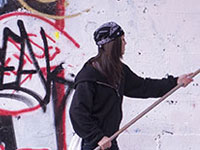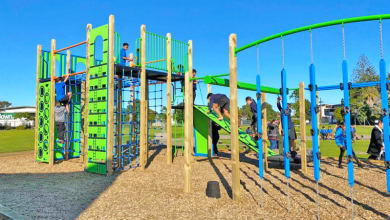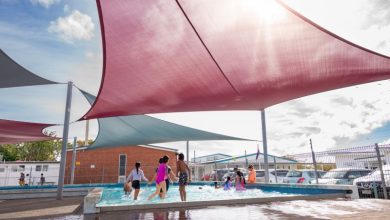An ounce of prevention…

 We were all kids once, and no matter how many boundaries are set in terms of respecting school property some students are still tempted to deface it.
We were all kids once, and no matter how many boundaries are set in terms of respecting school property some students are still tempted to deface it.
It is important therefore to have a few handy solutions to this very common problem up your sleeve.
One of the most prominent problems in the day-to-day maintenance of an institution of learning is, of course, the graffiti. For groundskeepers and maintenance staff, graffiti-d surfaces are an everyday pain that require a variety of methods of cleaning or replacement. While there is not just one solution, it is important to know all the preventative measures one can take, DIY products, the methods of restoration and the challenges that are faced with each different surface.
The best way to tackle any issue with maintenance is always to install preventative measures. There are things you can do, when you are talking about glass, marble and other non-porous surfaces. Students can use keys or other sharp objects to scratch graffiti into these expensive-to-replace surfaces and to prevent this from happening you have a few options. The first is the use of, “sacrificial Anti-Graffiti film” that according to Julie Smith the director of GlassProtech is a, “front-running solution to cost-effectively combat graffiti damage on glass and other non-porous surfaces such as stainless steel, mirrors and marble.”
This option works as these are, “specially designed films that are nearly invisible once installed. This provides a removable, sacrificial surface that can reduce or eliminate the need for expensive glass replacement”. This is useful for those surfaces that are hard to replace and especially susceptible to defacement. The film isn’t just a preventative measure however, she explains:
“The film can also be used to cover existing scratched glass extremely effectively. The adhesive bonds to the damaged glass seemingly removing the scratches from the surface.” This means that no matter what, you stay at least one step ahead of potential vandals. GlassProtech are a professional team of applicators who are happy to give advice on surface protection and they customise their service to best fit your needs and believe in being proactive against vandalism and graffiti.
But what about paints and permanent markets? Graffiti is often toughest on concrete walls and other rough surfaces. Usually to combat this you would have to call a professional, who would use sandpaper, high-pressure hoses and toxic chemicals. But is there a way to do this yourself with minimal products? For non-porous and painted surfaces, often biodegradable cleaners are adequate for the initial clean. This creates a safe environment for the children and avoids the noxious gas emitted from heavy-duty paint thinners, which should only be used on bare masonry. For protection, you can apply a barrier coating on any surface and it will make stripping graffiti ink easier in the future. For maintenance, hot water should be used and brushed against the surface regularly to prevent discoloration. Another cheap and simple option for handling graffiti is to simply paint over it. Resene has a project where you can drop off your unwanted paint and paint containers to any designated Resene ColorShops at any time during their opening hours and they will donate to schools to paint over graffiti. This has zero charge and is a quick and effective way to respond to graffiti in a school.
If graffiti is a recurring problem in your school, there are a few heavy-duty preventative and reactive measures you can implement. The first is a permanent barrier coating, which can be placed onto the desired surface. Whilst this option is the most expensive, it will not allow any graffiti paints to bond with the surface. One of these is based on polyurethanes, which prevent the surface from absorbing graffiti paint. Another is fluorinated coating, which reduce a surfaces contact with the paint. Hydrophobic silicone coatings can also be used, to repel water and reduce any photo-oxidisation, which can occur with graffiti and leave a lasting imprint on your surface. The last coating option is the relatively new nanoparticle based coating, which is both hydrophobic and oleophobic, meaning it can prevent both water and oil based paints from damaging surfaces in your school. While these options are both permanent and effective, they often are expensive and impractical.
As you can see, there is a multitude of ways that you can get rid of graffiti in your school. Protection of glass windows, and the preservation of the aesthetics are both paramount for any organisation. It is essential to take preventative actions against any form of vandalism, whether from sacrificial films, or permanent coatings and there are many easy ways to remove graffiti without having to spend big on hydrophobic chemicals. In education though the idiom, “An ounce of prevention is better than a pound of cure,” is never more apt then when it refers to Graffiti!









